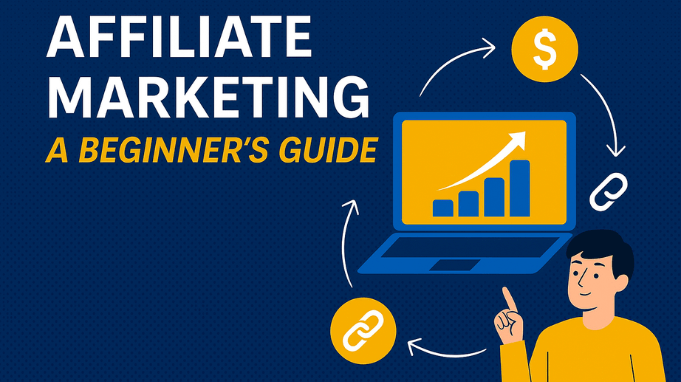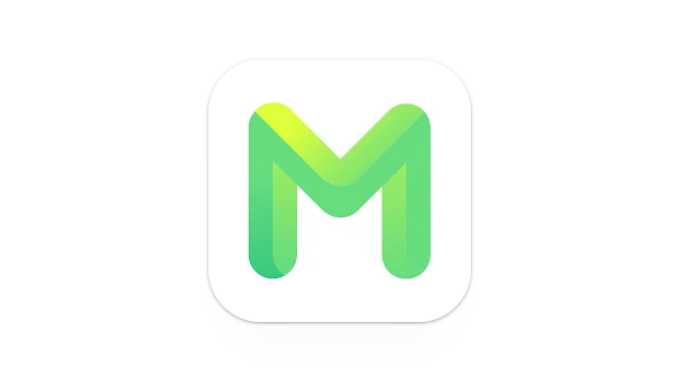Affiliate marketing is a performance-based online business model where you earn commissions by promoting other companies’ products or services. It’s one of the most popular and cost-effective ways to make money online, and in 2025, it’s more accessible than ever.
At its core, affiliate marketing involves three parties:
- Merchant (Advertiser): The creator or owner of the product/service.
- Affiliate (You): The marketer who promotes the product.
- Customer: The end user who purchases through your affiliate link.
When a customer clicks your unique affiliate link and completes a desired action (like making a purchase), you earn a commission.
How Does Affiliate Marketing Work?
Here’s a simplified process of how affiliate marketing operates:
- You join an affiliate program.
- You receive a unique affiliate link.
- You promote the product using your link.
- Someone clicks and purchases.
- You earn a commission.
Why Affiliate Marketing Is Popular in 2025
Affiliate marketing is booming because it’s a win-win for everyone involved. Businesses can scale their marketing with minimal upfront costs. Affiliates can earn passive income without the hassle of product development, inventory, or customer service.
Here are a few reasons it’s thriving:
- Low Barrier to Entry: You don’t need a large investment to get started.
- Scalability: Your income potential grows with your traffic and audience.
- Flexibility: Work from anywhere, anytime.
- Diverse Income Opportunities: Promote physical products, digital tools, software, courses, etc.
Is Affiliate Marketing Still Worth It in 2025?
Absolutely. With the rise of content creators, influencers, and niche blogging, affiliate marketing continues to expand. E-commerce is at an all-time high. Brands are eager to partner with skilled affiliates who can drive traffic and sales.
The Affiliate Marketing Ecosystem
Understanding the ecosystem helps you know where you fit in.
Merchants
These are brands that create and sell products or services. Examples: Amazon, Deriv, Canva, Hostinger.
Affiliate Networks
These act as middlemen, managing product listings, tracking, and payouts. Examples include:
- ShareASale
- Impact Radius
- CJ Affiliate
- ClickBank
Affiliates
That’s you—the person creating content, sharing links, and driving sales.
Consumers
They purchase or sign up via your link. The value you give them impacts your success.
Types of Affiliate Marketing
Affiliate marketing falls into three main categories:
- Unattached: Promoting offers with no personal connection (e.g., paid ads).
- Related: Promoting products within your niche or content theme.
- Involved: Recommending products you’ve used and trust—ideal for long-term success.
Step-by-Step Guide to Starting Affiliate Marketing
Let’s break it down into practical, beginner-friendly steps.
Step 1: Choose Your Niche
This is the foundation of your business. Pick a niche that is:
- Profitable
- Evergreen
- Has existing affiliate programs
- Aligns with your interests and expertise
Popular Niches:
- Health & Wellness
- Personal Finance
- Trading & Forex
- Tech & Software
- Online Education
- Travel
- Beauty & Fashion
- Digital Marketing
How to Choose: Ask:
- What do I love learning about?
- What questions do people ask me?
- Can I build authority in this niche?
Step 2: Research Affiliate Programs
After identifying your niche, find products and services to promote. Look for:
- Trustworthy companies
- Fair commission rates
- Recurring payouts (SaaS tools)
- High conversion rates
Affiliate Programs to Consider:
- Amazon Associates
- Bluehost
- Impact
- Rakuten
- ClickBank
- Deriv and XM (for Forex bloggers)
- Teachable
- ShareASale
- Commission Junction (CJ)
- Canva
- PartnerStack
- GetResponse
- Gigistore24
- ConvertKit
- Fiverr Affiliates
Visit the product websites and scroll to their footer. Look for “Affiliate Program” or “Partners.” You can also check out direct affiliate programs from SaaS platforms, eCommerce stores, and brokers
Step 3: Build Your Website or Platform
You need a space to share content and affiliate links. Options include:
- A blog/website (best for long-term growth)
- YouTube channel
- Social media platforms: Instagram/TikTok/Facebook Page
- Email list
Starting a Blog:
- Pick a domain name related to your niche
- Get web hosting (e.g., Hostinger, Bluehost)
- Install WordPress
- Use SEO-friendly themes (Astra, Kadence)
- Install plugins: RankMath/Yoast SEO, WP Rocket, Pretty Links
Step 4: Create Content That Converts
Content drives your affiliate marketing success. Types of content to create:
- Product reviews
- Tutorials and how-tos
- Comparison articles (X vs. Y)
- “Best of” roundups
- Top 10 lists
- Case studies and results
- Listicles
- Buying guides
Example Titles:
- “Best Forex Brokers in 2025 (Tested & Reviewed)”
- “How I Made $1,200/Month With Affiliate Marketing”
- “Deriv vs IC Markets: Which Is Better?”
Tips:
- Focus on solving user problems
- Use keywords with high search intent
- Add CTAs with affiliate links
- Include trust elements like screenshots, results, disclaimers
Step 5: Get Traffic to Your Content
Without any traffic, you can’t make money. It’s simple as No traffic = no sales. Focus on one or two traffic sources to start.
Free Traffic Sources:
- Search Engine Optimization (SEO): Write blog posts around long-tail keywords such as reviews or comparisons.
- Pinterest: Create pins that link to blog posts
- YouTube: Rank for low-competition search terms
- Social media: Facebook groups, Reddit, Quora
Paid Traffic Sources:
- Google Ads
- Facebook & Instagram Ads
- LinkedIn ads
- Native ads (Taboola)
- Tiktok Ads
- Solo ads (for email campaigns)
Step 6: Build an Email List
Email marketing boosts conversions and keeps your audience engaged.
Tools: ConvertKit, GetResponse, MailerLite
Offer a lead magnet:
- Free checklist
- eBook
- Mini-course
Then, nurture them through an automated email series.
Step 7: Track, Test, and Optimize
Use tools to monitor clicks, conversions, and earnings like:
- Google Analytics (traffic)
- Pretty Links (link tracking)
- ThirstyAffiliates
- Voluum (advanced tracking)
Test different headlines, link placement, product types, content types, and CTAs.
Top Affiliate Programs in 2025 (Detailed Table)
| Program | Niche | Commission | Cookie Duration |
| Amazon Associates | General | 1-10% | 30 days |
| Deriv | Forex/Trading | $5–$500 per referral | 30 days |
| ClickBank | Digital products | 50–75% | Varies |
| Bluehost | Web Hosting | $65–$150/sale | 90 days |
| Fiverr Affiliates | Freelancing | Up to $150 CPA | 30 days |
| Canva | Design Tools | $36/signup | 30 days |
| Coursera | Online Courses | 15–45% | 30 days |
Common Affiliate Marketing Mistakes to Avoid
- Not disclosing affiliate links (FTC requirement)
- Promoting poor-quality or unrelated products
- Not building trust with your audience
- Overloading content with links
- Focusing only on sales, not value
Affiliate Marketing Tools You Need
- Keyword Research: Ubersuggest, Ahrefs, Semrush
- SEO Plugins: RankMath, Yoast SEO
- Link Cloaking: Pretty Links, ThirstyAffiliates
- Content Tools: Grammarly, Surfer SEO
- Analytics: Google Analytics, ClickMagick
Real Case Studies of Affiliate Marketers
Sarah (Parenting Blogger)
- Blog: MomSmartLiving.com
- WordPress and SaaS: WPBeginner.com is one of the largest WordPress beginner websites.
- Focus: Baby gear & parenting guides
- Income: $3,000/month from Amazon & affiliate courses
John (YouTube Trader)
- Channel: TradeWithJohnFX
- Focus: Broker reviews, forex tutorials
- Income: $5,000+/month via Deriv, Exness affiliate programs
Affiliate Marketing FAQs
Yes. You can start with social media and free blogging platforms, but investing in domain, tools, and education speeds up results.
Most programs accept payments via PayPal, Skrill, bank transfers, or cheque.
It varies with the product or services you are promoting. Some earnings may take a day, some weeks, and others weeks, or even months. Focus on building a community first.But with consistent effort, some see better results in 1–3 months. Others may take longer.
Yes, but I would reccomend you keep your niche clear to avoid confusing the audience.
Basic writing, SEO, and research skills. As you grow, learn email marketing and analytics.
Yes. Use YouTube, social media, or email. But a website builds credibility.
From $0 to $10,000+/month. It depends on traffic, niche, and conversion rates.
Yes. But follow FTC guidelines and disclose partnerships.
Personal finance, online tools, and education have low competition entry points.
Final Thoughts
Affiliate marketing is one of the most beginner-friendly ways to build online income. It’s not a shortcut to riches, but it is a scalable, long-term strategy when done right. Focus on trust, education, and solving real problems—and you’ll see results.
Vincent Nyagaka is the founder of Chweya, where he breaks down complex financial topics into simple insights. A trader since 2015, he uses his market experience to help readers better understand investing, trading, and personal finance.



